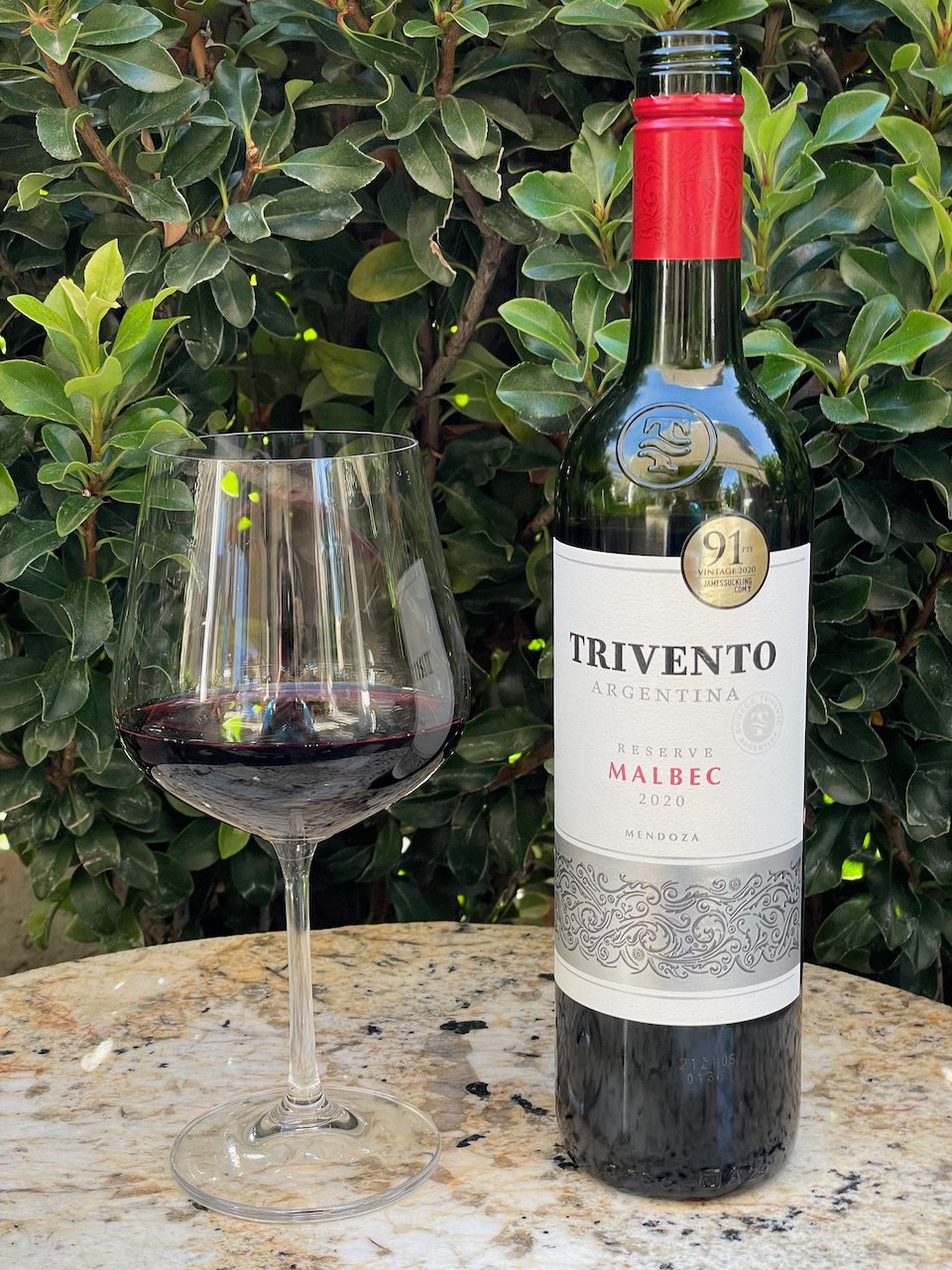2020 Trivento Reserve Malbec ($11)
World Malbec Day is coming up on Sunday, April 17th, an annual holiday that commemorates the founding of the first agricultural school in Argentina in 1853, which was instrumental in the early cultivation of Malbec in the South American nation. And, here’s a great way to celebrate!
This Trivento Reserve Malbec is from Mendoza’s Bodega Trivento which is tucked away in the towering Andes Mountains of Argentina
The team at Trivento—which means “three winds” in Spanish— sources fruit for the Reserve Malbec from a deliberate mix of new and old vines from two renowned sub-regions in Mendoza: Luján de Cuyo to the north and Valle de Uco to the south.
In Argentina, the term ‘Reserva’ is given to all red wines that have been aged in oak barrels for at least one year.
This Trivento Reserve Malbec is produced from 100% Malbec grapes that are de-stemmed and crushed. Maceration occurs prior to a 20-day fermentation in stainless steel tanks. It then undergoes natural malolactic fermentation before 20% of the wine is aged in French and American oak for six months.
This Trivento Reserve Malbec is deep purple in color with aromas of black cherry and plum. On the palate it has soft tannin, moderate acidity, vanilla and caramel flavors from the oak, and a light finish.
At $11 this is a wonderful wine that is fully deserving of being a Behind the Cork™ Wine of the Week. Look for this one and raise a glass for World Malbec Day on April 17th. Cheers!
Disclosure of Wine Sample Submission: I received this sample at no cost for review. The opinions expressed are entirely my own.
Samples Provided by Trivento (via Jarvis Communications)




